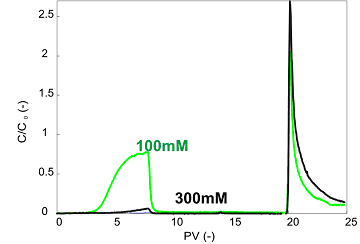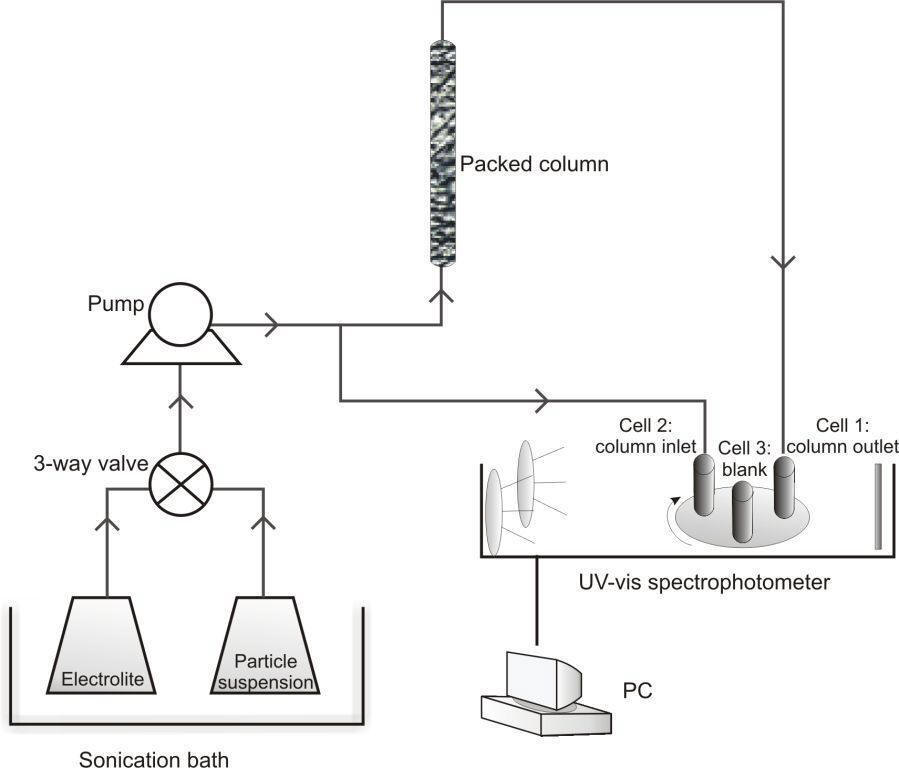An important research field of the Groundwater Engineering group concerns colloid transport in porous media, both from an experimental and a modelling point of view. The particles studied in the recent years include model colloids (eg latex particles) and iron-based colloids (zerovalent iron, iron oxides) used for in situ groundwater remediation. At the moment, the research in funded by the AQUAREHAB EU project and by a national PRIN project.
Model colloids (eg. latex particles) are studied to improve knowledge of the parameters governing particles mobility and their deposition on solid matrix (filtration, blocking, ripening, straining), and to understand how hydrochemical parameters can affect the mobility of natural and engineered colloids, in particular in the presence of transients in pore water salinity (Tosco et al, 2009; Tiraferri et al. 2010). Studies include transport experiments (column tests) and numerical modelling. An example of typical breakthrough curves is reported below, along with a scheme of the model setup used for the tests. Salt and colloid concentrations at the inlet and outlet of the columns can be monitored continuously using a UV-vis spectrophotometer equipped with flow-through cells.

Typical breakthrough curves of latex transport tests

Experimental setup of column transport tests